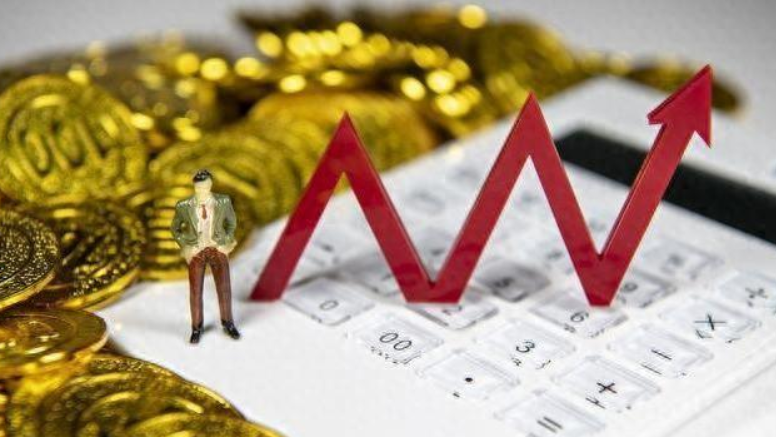The Impact of Ending Interest Rate Hikes on Asset Prices
Advertisements
The intricate dynamics of global financial markets are currently experiencing a profound shift,largely driven by the intermingling economic policies of two major powerhouses—China and the United States.Recent developments suggest a pivotal moment in monetary policy,particularly following the latest Federal Reserve meeting.Observations indicate that a confluence of events is hinting at a potential reversal for Chinese stocks and a more flexible environment for Hong Kong equities,creating ripe opportunities for investors.
A significant event took place on November 1,when the Federal Reserve's meeting confirmed the anticipated shift in overseas monetary policies.A critical concern has been the changing interest differentials between the United States and China,which appear to have reached a turning point.The synchronization of the so-called “policy bottom” between these two economies is set to redefine market expectations.
In October,U.S.inflation reports and employment figures indicated a slow down,highlighting the elusiveness of economic growth that had once seemed more stable.The Consumer Price Index (CPI) and non-farm payroll numbers underperformed market expectations,causing a cascading effect on consumer confidence,which continued to diminish.As a result,the prevailing sentiment is that the cycle of interest rate hikes,which has characterized recent financial discourse,may have run its course.Market consensus converged around this notion,particularly in light of recent statements from Fed Chairman Jerome Powell,whose hawkish tone has not altered the prevailing view that bond yields and the U.S.dollar would soften,while stock markets might see a continued boost.
The historical perspective of asset performance following the cessation of rate hikes reveals certain patterns.Typically,global equity indices tend to rise,with growth indices demonstrating higher resilience.The bond market,particularly long-term yields,usually experiences a downturn,especially noticeable in U.S.Treasury rates.On the other hand,the correlations between exchange rates and commodities become less predictable.It is noteworthy that in previous cycles,equities often rallied around the times of the final rate increases,reflecting a succinct alignment in market action.
As investors look forward,the focus shifts toward performance characteristics of A-shares.During intervals between the last rate hike and the first cut,specific factors—like earnings forecasts and growth rates—tend to hold weight,signifying potential leaders in the market.Conversely,defensive plays like high dividend or low valuation stocks have not consistently delivered results in this scenario.
In an environment of elevated interest rates,A-shares present new strategic investment avenues.The contemporary investment approach emphasizes the importance of improving profit margins and free cash flow scenarios across various sectors.Key industry indicators are closely scrutinized,especially in the lead-up to the release of quarterly earnings reports from companies,which could serve as a barometer for weathering the current macroeconomic landscape.
Initially,the focus should be on demand recovery,particularly examining sectors that have seen bottoming out in capacity and inventory cycles,coupled with consistent income improvement.As economic conditions stabilize,gross margins will similarly need attention,ensuring that revenue and order volumes are on a positive trajectory.Finally,in an expansion phase,evaluating the quality and efficacy of any growth should become paramount,encompassing operational capacities,profitability, and debt serviceability.
and debt serviceability.
The demand recovery phase indicates a composite supply contraction at play,with capital expenditures and inventories reaching a nadir.As free cash flow begins to ascend amidst improved demand conditions,sectors that have faced sustained downturns—often for two to three years—may be the ones to watch closely.Currently,industries poised for an uplift include consumer electronics (such as passive components and display panels),semiconductors,and real estate sales (particularly home appliances and construction materials).
Once the recovery phase has begun,specific industries begin to reverse their previous misfortunes; as evidenced by rising Earnings Before Interest and Taxes (EBIT).Companies in this stage are starting to expand from their bottom,with increases in capital expenditures,necessitating diligent selection of sectors that display improving revenue figures,order trends,and gross margin recoveries.
The industries likely to flourish during the expansion phase reveal a strong focus on operational stability—evidenced through profitability,cash flow management,and balanced debt structures.The manufacturing sector,particularly aerospace equipment,inverters,and lithium battery production,emerges as likely candidates for investment.
Significantly,as global monetary policies converge and show signs of bottoming out,this could mean the final touchpoint for the A-share market may well align with the resonance felt between Chinese and American monetary strategies.The narrowing valuation gaps observed in A-share markets signal readiness for potential recovery.
Investment strategies in A-shares should capitalize on the resonance of these economic policies,focusing on valuation recovery—especially in areas such as non-bank finance and innovative pharmaceuticals.Insights derived from third-quarter reports indicate targets with robust free cash flow combined with improving demand: key sectors include consumer electronics and semiconductors,particularly in passive components and panels,as well as upstream construction materials.Moreover,industries poised to rebuild active inventory while simultaneously improving margins,such as textile and white goods sectors,should draw attention.
For Hong Kong stocks,narrowing interest rate differentials emphasize sensitivity within sectors like consumption (particularly in pharmaceuticals and automobiles) and the internet sphere.Additionally,opportunities arise in capital expenditure and inventory recovery following prolonged stagnation,particularly highlighted in consumer electronics,semiconductor revival channels,and real estate sales chains.
Leave a comment
Your email address will not be published